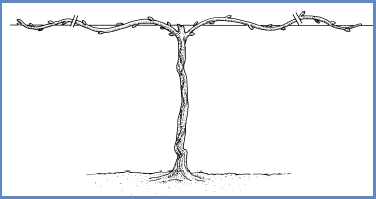Sonoma Valley’s hillsides are covered in rows of lush green leaves. At Deerfield the Organic Syrah vines are in full swing, blooming into great bushy hedges soaking up the sun and clamoring for attention. It’s remarkable how fast they’re growing. It seems like inches a day and I could swear that if you watch them closely you can see them grow. During this period of incredible vigor two things are happening right now in the vineyard: As I discussed in this week’s episode of Cellar Rat TV, our vines are going through inflorescence (or flowering). I had mentioned at the end of April that it looked like they were going to flower soon – but it turned out that they are right on time and the flowers are just beginning to form. That seems fortunate because this unusually wet May threatens the formation of grapes by unleashing a downpour on the fragile flowers, potentially destroying them or washing away the pollen. If that happens the result could be grape bunches with too few grapes on them or none at all. Luckily most of the flowers are still encased in the calyptra, the shell of fused petals, which hopefully will shield them from the rain. The weather is beginning to warm now and although some showers are promised later this week, I think the worst is behind us. Soon the flowers will have pollenated themselves and the vines will enter a short period called fruit set where the flowers transform into little immature grapes.
As the vines work to produce their fruit, the tendrils that support the leaves and clusters of grapes are beginning to snake outwards and are now long enough to tie to the trelise. If you thought pruning the vast vineyards in the winter was a challenge it seems easy compared to the tedious process of coaxing each vine into the desired shape. It requires a gentle touch because, unlike the wooded part of the vine, the green new growth is fragile and must be handled with care. At the same time some of the canopy might be reduced if the leaves seem too thick to allow the wind to flow through and keep the vines dry. I’ll talk more about the benefits of trellising at a later time but sufficed to say there is a multitude of reasons for having some sort of system which can look radically different because the shape of the vine itself is so malleable. The one we employ is the traditional double cordon method, which is by far the most commonly used system in California. The vine is split into two main arms called cordons which run in opposite directions horizontally along the bottom of the trellis. The new growth is trained straight upwards allowing the leaves to form a sheet that is evenly exposed to sunlight. The grapes hang down along bottom of each cordon allowing them to receive sunlight, air flow, and increase the ease of harvest. Just a small portion of the vineyard is done so far but slowly the growers are affectionately creating order out of chaos. The grape growers of Sonoma Valley still take a close, hands-on appoach, paying special attention to each vine which reflects their mindfulness of the principles of organic, sustainable, and biodynamic farming.